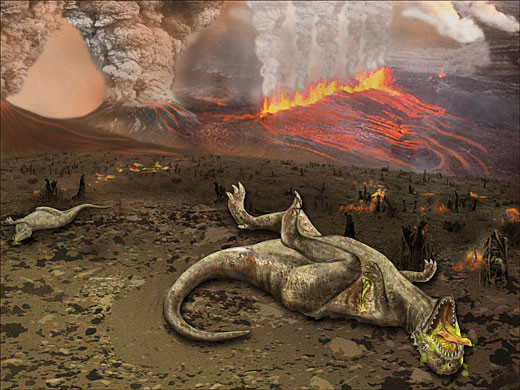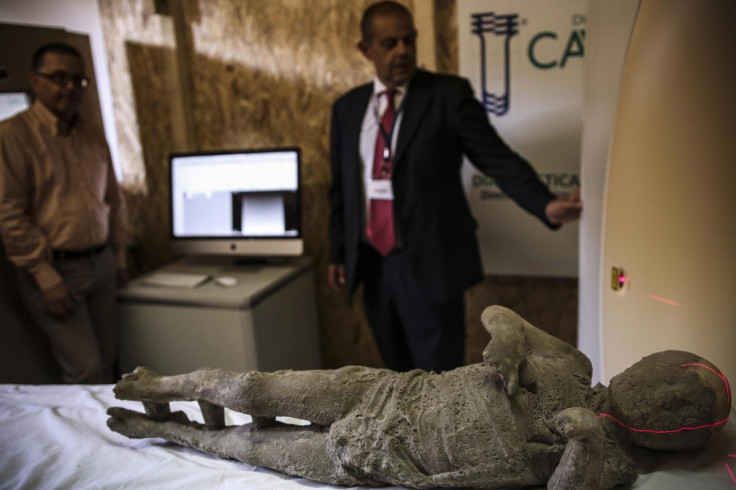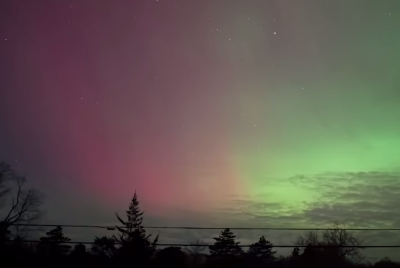Dinosaurs thought to have died in Pompeii-style disaster probably drowned in porridgy torrent

Chris Rogers, University of Bristol
The discovery of hundreds of extremely well-preserved dinosaur fossils in China in the 1990s, some in the postures they adopted at the moment of death, has kept scientists busy ever since. The finding led to comparisons with the Roman city of Pompeii, where citizens were entombed in the falling ash from the volcanic eruption of Mount Vesuvius.
But while this is a reasonable comparison, a closer look at the sediments around the small town of Lujiatun in north-east China, where the fossils were found, suggests volcanic ash may not be to blame for the death of the dinosaurs.
Remarkable remains
The fossils, stuck in time as thee-dimensional skeletons, are truly unique considering most other fossilised dinosaurs and birds from the same region and era (125m years ago) were flattened, albeit often showing evidence of feathers and hair.

The dinosaurs, birds and small mammals at Lujiatun were found within rocks full of volcanic ash. It initially seemed they were all buried together after a huge eruption created a catastrophic ash cloud.
Fossil of Psittacosaurus.
Ghedoghedo
A dog-sized horned dinosaur known as Psittacosaurus is Lujiatun's most common find. Scientists have dug up both isolated individuals and clusters of five or six juveniles, which appear as if they had been buried together. The discovery of another dinosaur, Mei long, which is preserved curled up in a bird-like sleeping position, was what lead to the suggestion that the animals had been killed by poisonous volcanic gases and then buried.
A curled up Mei long dinosaur, almost perfectly preserved.
Cropbot, CC BY-SA
Recently, different groups of researchers have investigated the sediments that produced the Lujiatun fossils. They have suggested that volcanic mudflows (lahars) – a destructive slurry of ejected volcanic debris and boiling water – buried the one group of young Psittacosaurus, while another Psittacosaurus specimen was described as having been overcome by a different type of volcanic debris flow. However, we don't know exactly what location and which rocks they come from, so it's hard to be sure.
This is a symptom of a much larger problem in Chinese palaeontology, where many fossils are excavated by local collectors. They often make it into museums without important information about the exact location of the find.
Matching fossils and rocks
In the summer of 2013, my colleagues and I went to visit Lujiatun village. We wanted to work out exactly where the fossils were coming from and whether they had originated from a single event.
We made a detailed study of the fossil-rich sediments around the village. Once we identified the rocks the fossils were coming from, it became clear the fossils had in fact been recovered from multiple levels of depth, pointing to a number of different burial events.
Detailed study of the rocks in the field and microscopic sections showed that the sediments were very rich in volcanic material, but did not show the combination of characters we would expect from a deposit produced from an eruption of volcanic ash (airfall deposits), such as abundant melt fragments.
Mudflow after the 1982 eruption of Mount St Helens in the US.
USGS, CC BY
We found that the sediments had a predominantly volcanic source, but were subsequently transported by flowing water. Evidence for this comes from graded bed boundaries and well rounded sedimentary rock fragments, as well as isolated vertebrate material which shows clear signs of transport.
Our interpretation then is that Lujiatun is not a Chinese Pompeii at all. Some dinosaurs may have been killed by frequent eruptions in the area, but most of the fossil finds represent single animals and clusters that had been overwhelmed by water-borne ash and volcanic shards that were picked up and reworked by intense bursts of rainfall. The animals were borne along by a churning, porridge-like sheet flood that swamped and drowned them in its rapid motion.
Some animals preserved in the Lujiatun deposits seem to have been resting when they died but it is clear that not all of them were. Even for those that are curled up, it is debatable whether these are really sleeping postures. Since there is no evidence to link the multiple burial events directly to volcanism or other possible releases of toxic gases it has yet to be established whether these animals were alive when buried. But it does seem clear from the completeness of specimens that they were quickly buried and not transported considerable distances.
The rocks themselves contain a wealth of information about the environment that dinosaurs such as Psittacosaurus lived and died in. What's more, studies such as ours help to demonstrate the importance of considering the deposit as a whole, and the indispensability of fieldwork. It is sometimes too easy to accept a seductive and dramatic story. But the world is often more complicated than that.
Chris Rogers, PhD student in Geology, University of Bristol
This article was originally published on The Conversation. Read the original article.
© Copyright IBTimes 2025. All rights reserved.
























